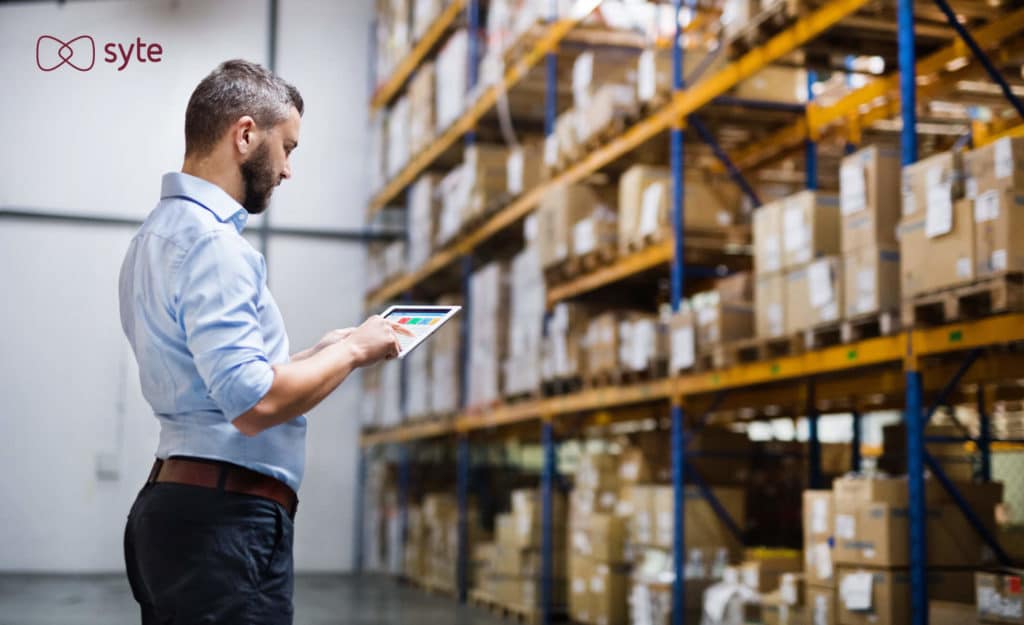eCommerce technology has come a long way since retail giant Amazon first started selling books online back in the mid-90s. Today, artificial intelligence (AI) has become an irreplaceable part of how we shop and do business on the web. It’s a key component of the underlying infrastructure that brands and retailers rely on to engage customers, track trends, make better business decisions, and provide the most optimal, personalized customer experiences possible.
In this post, we’ll take a look at the ever evolving capabilities of AI in the retail industry and the top nine trends in eCommerce AI that you can expect to see in the coming year.
AI voice assistants like Amazon’s Alexa, Apple’s Siri, and Google Assistant have become household names used by millions of people worldwide. In fact, 27% of shoppers took advantage of voice assistants to make online purchases in 2020, accounting for $40 billion of revenue in the US and the UK alone.

As more and more consumers get comfortable with AI voice assistants, the technology behind voice-enabled shopping will continue to advance at a steady pace. In 2022, for example, we expect to see an increase in the number of voice assistants that can use natural language processing (NLP) to understand complex voice queries in order to provide more accurate results. NLP technology will surface products and recommendations that are more likely to result in conversion and an overall seamless customer experience.
More Intuitive and Engaging Visual Shopping Experiences
AI has made it easier for customers to have the confidence they need to complete bigger purchases online. You no longer have to shop in person to see how an item of furniture, piece of clothing, or jewelry will look or fit. Today, brands and retailers can use visual AI and augmented reality (AR) to make the process simple and intuitive, often just requiring a click or swipe on your mobile device. For example, you can virtually try on clothing or beauty products with your built-in camera or see how a piece of furniture will look in a 3D-rendered space.

In 2022, we predict more eCommerce companies to offer polished visual search options, enhanced AR/VR tools, and more sophisticated product recommendations that use visual AI to provide hyper-relevant suggestions. AI-assisted visual shopping experiences will also take a front seat in social commerce, where we’ve seen platforms like Facebook and Tiktok invest in improved product recognition and recommendation capabilities that will make product discovery easier, faster, and more accurate.
Smarter Upselling and Cross-Selling Opportunities
AI gives brands and retailers the chance to keep up with the competition through accurate predictions and smarter ways to upsell and cross-sell. For example, a sophisticated AI-based recommendation engine can provide highly relevant suggestions for similar or complementary items based on live session activity, instead of just relying on browsing history and previous purchases. The returns for this type of technology are encouraging, with research showing that:
- 63% of smartphone users are more likely to purchase from companies whose mobile sites or apps offer them relevant products recommendations.
- 49% of consumers have purchased a product they did not intend to buy after receiving a personalized product recommendation.
Beyond recommendations, AI tools can help brands and retailers optimize their eCommerce merchandising so that the order of search results and the placement of promotions is uniquely tailored for every visitor.
Increased Use of Real-Time Data Analytics to Optimize Operations
Forward-thinking brands and retailers can improve supply chain management and inventory assortment by analyzing which products are in-demand and which items are not moving off their shelves. Data can be aggregated while customers are browsing through brand websites and other channels in real-time. With AI-based machine learning, these analytics can provide actionable insights on important areas to focus on for sales, discounts, and other promotions.
On a deeper level, brands and retailers can use visual AI to predict more granular trends based on detailed product tagging. For example, you might see that round collars or balloon sleeves are all the rage – and you can use that data to anticipate upcoming customer demand and inform your next round of purchasing/inventory decisions in real-time. Doing so will benefit your customers by optimizing their shopping experience (no more “out of stock” notices on product listing pages) and it benefits brands by reducing spend on irrelevant items and the amount of warehouse space dedicated to slow-moving products.

Heightened Focus on Omnichannel Product Discovery
After nearly two years of COVID, shoppers worldwide have become used to the convenience of shopping online. However, there are many different paths they can take to complete their purchase journey. For example, brand-loyal customers might go directly to their favorite retailer’s website to shop. Other individuals will find eCommerce sites through a Google search or a dynamic ad. Sometimes, shoppers will even discover products without visiting a brand’s website – they can simply see and purchase items from a digital marketplace or a social media page. Of course, many stores have also reopened their brick and mortar locations — which is another route shoppers can take to complete their purchase journey. Additionally, some shoppers will compare prices across websites and then buy the best option in person. Others will pay online and pick-up their purchase in-store.

There are numerous online and offline channels vying for your customers’ attention and wallet. So brands that want to attract new customers and keep existing customers happy in 2022 will need to implement ways to own and shape as much of the shopping experience as possible. They can do this by putting an effective omnichannel strategy into place that uses AI to access real-time data that provides a unified view of individual customer journeys across each relevant touchpoint. Ultimately, the brands that will stand out from the noise will focus on customer loyalty by expanding product search and discovery capabilities and providing shoppers with exceptional value across every possible channel.
Growth of Direct-to-Consumer Sales
Big retailers such as Amazon and Walmart are unavoidable. However, AI going mainstream gives brands and smaller retailers a chance to own and excel at creating the best customer experience possible.
With AI, it has become easier and faster to personalize every angle of the customer journey, particularly for companies with specialized products and a community of loyal customers. The end result is two-way: Brands’ understanding of their customers deepens while shoppers get tailored experiences that champion their individual preferences. This is one of the main reasons why direct-to-consumer brands and approaches will continue to accelerate in 2022.
More Effective eCommerce Fraud Prevention

With online shopping becoming more prevalent, eCommerce fraud has spiked. This has led to developments such as cloud-based AI fraud prevention and chargeback correction platforms. These technologies can automatically detect fraudulent orders, falsification of addresses or other important information necessary to complete the transaction, and evaluate the threat score.
AI can discern patterns that distinguish a legitimate purchase from a fraudulent one, including those that can easily be missed by human detection. With benefits including real-time processing of data, consistent results, and behavior analytics, we can only see AI-enabled eCommerce fraud protection becoming more common in the future.
Solutions to Support Mobile Commerce
Mobile commerce sales are on the rise. It is anticipated that by 2024, mobile shoppers will exceed 187 million US customers – representing over half the population of the United States. With that data in mind, we expect mobile commerce to become one of the main channels for online shopping, especially when customers can easily conduct research, look for price comparisons, and make payments on the go. As such, brands and retailers in 2022 will benefit from optimizing their AI-powered mobile shopping tools.
One of the key areas to focus on for mobile commerce is visual search. When people are browsing or looking for inspiration on their phones, they will often grab a screenshot of an item that catches their eye. This could be anything from an influencer’s outfit on Instagram to a beautifully laid table on Pinterest or a funky pair of earrings spotted on a friend’s Facebook post. By enabling these inspired shoppers to upload images to your site and search specifically for visually similar items, you can immediately direct them to the most relevant products in your inventory.

More Concentrated Sustainability Efforts
The pandemic resulted in a noticeable shift in consumer behavior where “greener” choices have become a top concern among customers. Moving forward, shoppers will expect brands to take more responsibility for the impact of commerce on the planet and AI is quickly becoming part of the technology that brands and retailers can harness to become more sustainable. In fashion, for example, AI solutions are synonymous with intelligent production, which means forecasting trends and planning for demand to prevent overstocking.
AI is Defining the Future of eCommerce
There’s no denying it—AI is becoming an integral part of eCommerce businesses. We see it changing and shaping the industry to meet both consumer demands and business goals. By automating and optimizing your online shopping experience and focusing on the key areas most important to customers these days – aka omnichannel product discovery, fraud prevention, mobile shopping tools, and sustainability, more brands can connect more customers with the right products and experiences.